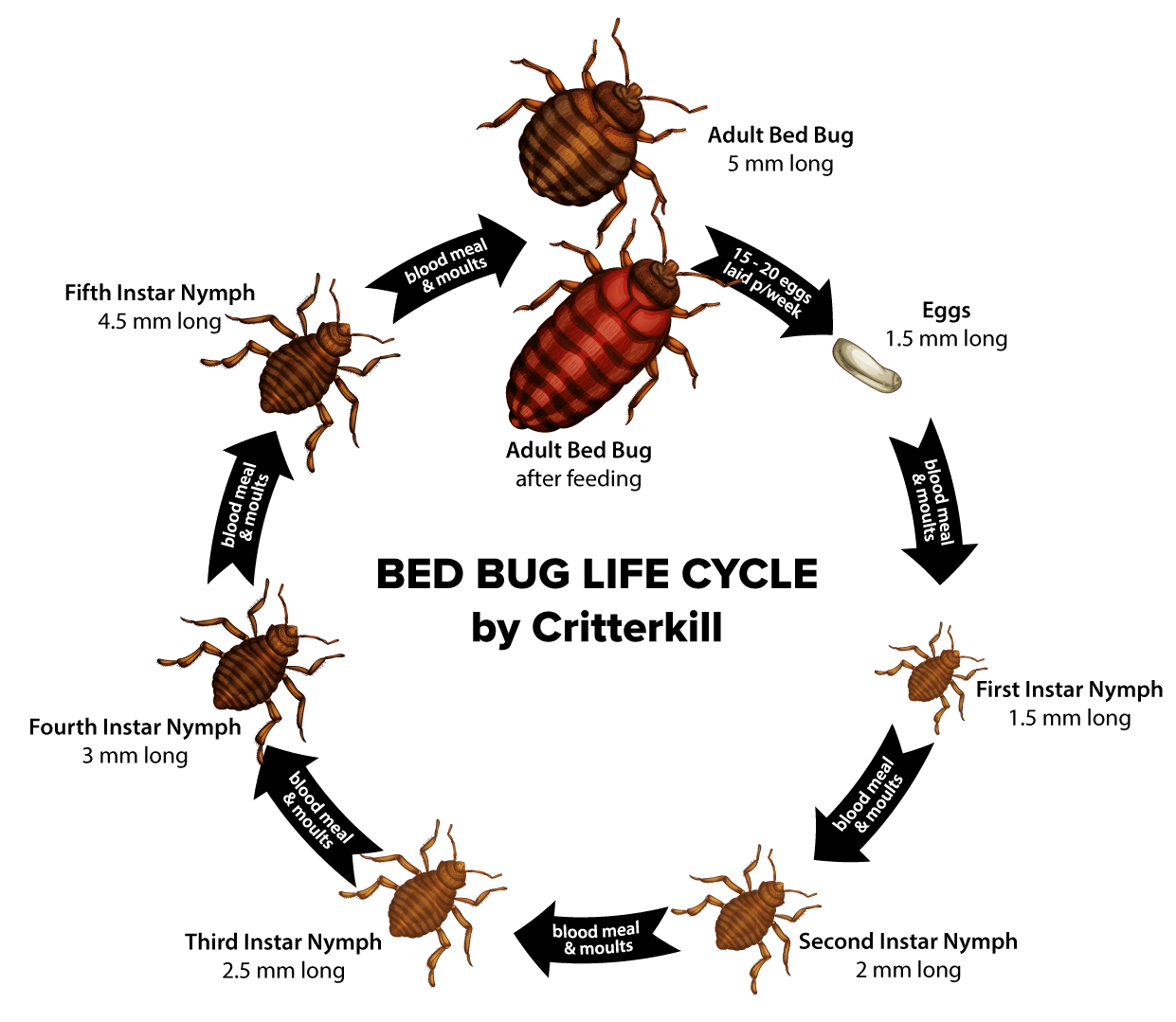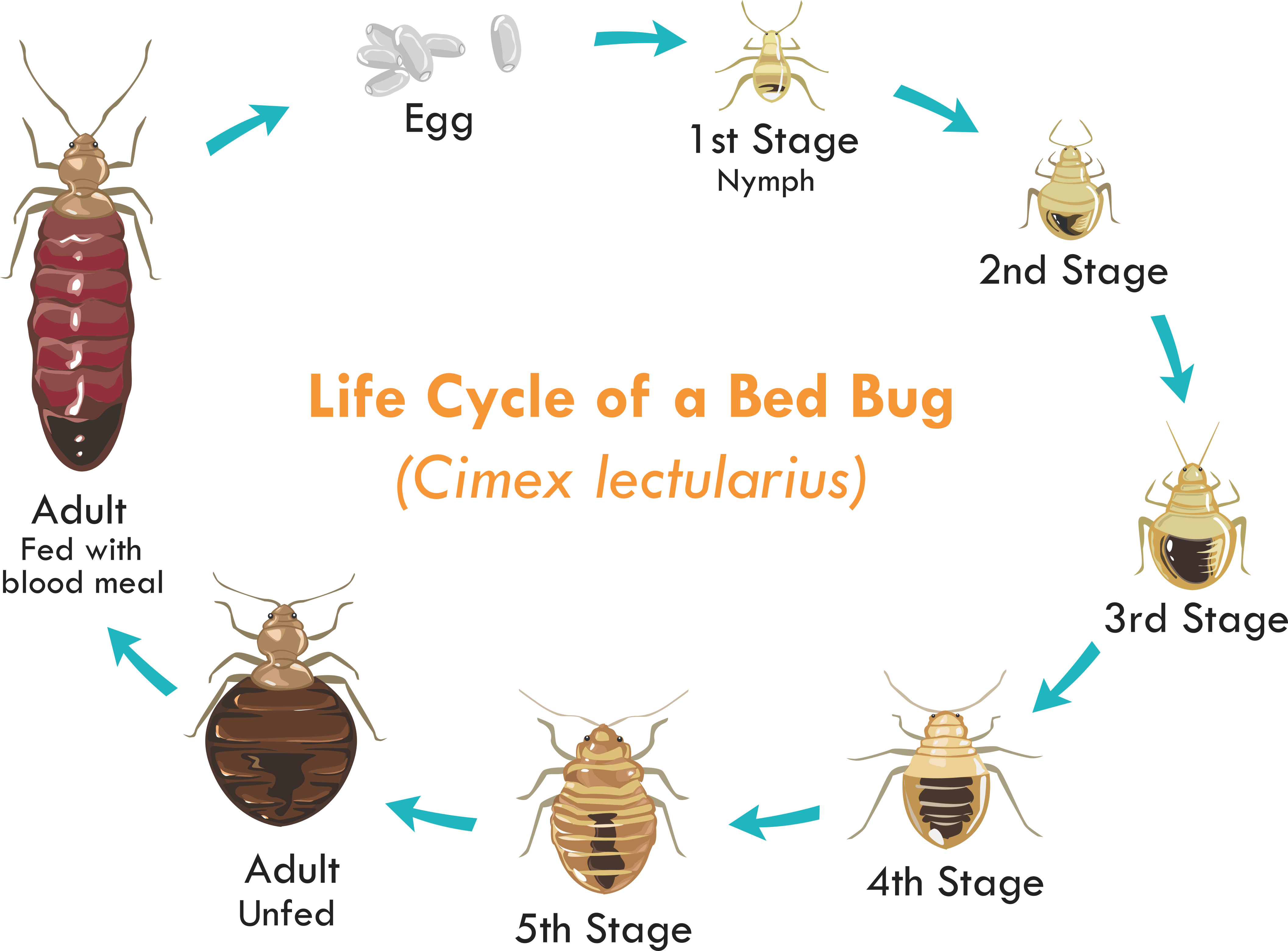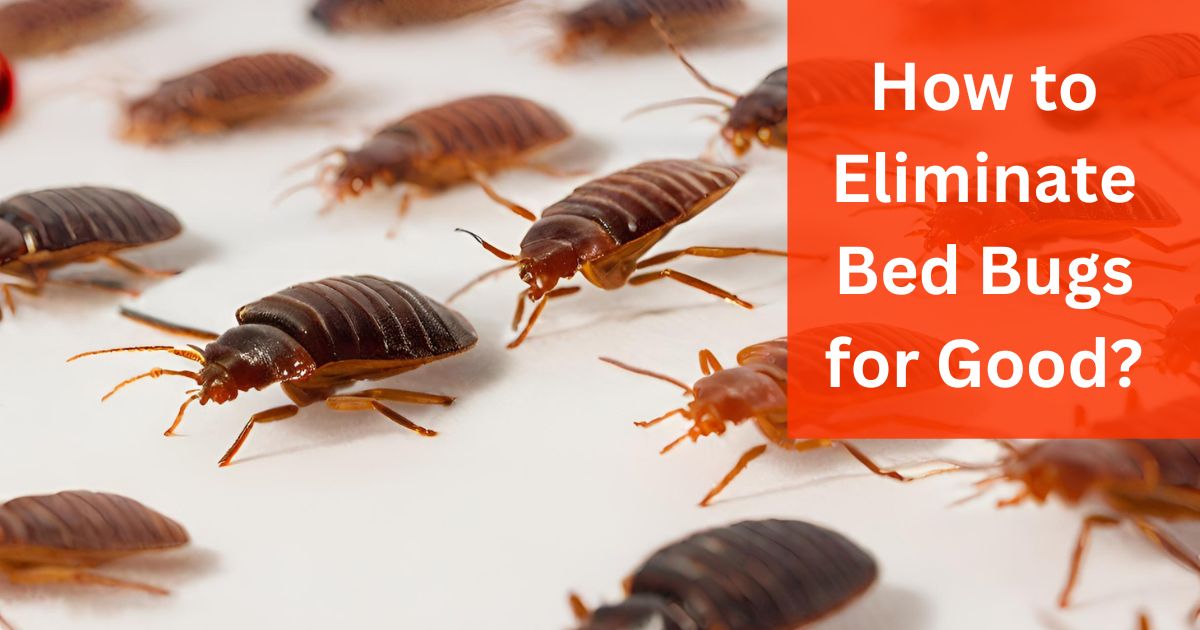To eliminate bed bugs for good, thorough cleaning, vacuuming, hot washing, and using insecticides are effective methods. Implementing a combination of these strategies is crucial for eradicating bed bugs from your home.
Emphasize regular cleaning routines and maintenance to prevent future infestations. It’s essential to act promptly and consistently to ensure long-term success in eliminating bed bugs. By following these steps diligently, you can effectively rid your living space of these bothersome pests.
As you take proactive measures, remember that patience and vigilance are key to achieving a bed bug-free environment.
Understanding Bed Bugs
Discover how to effectively eliminate bed bugs for good with expert tips and proven strategies. Say goodbye to these persistent pests and regain a peaceful night’s sleep. Uncover the best methods for eradicating bed bugs and reclaiming your home from these troublesome intruders.
What Are Bed Bugs?
Before you can eliminate bed bugs, it’s crucial to understand what they are and how they operate. Bed bugs are tiny, wingless insects that feed on the blood of humans and animals. They are mainly active at night and hide during the day, making them difficult to detect.
These pests are skilled hitchhikers, easily latching onto clothing, luggage, or used furniture. Once they infest a space, they can quickly multiply, creating a nuisance and potential health risks.
Identifying Bed Bug Infestations
Knowing how to identify a bed bug infestation is vital in order to tackle the problem effectively. These pesky bugs leave behind some telltale signs that can give away their presence:
- Blood stains on your sheets or pillowcases
- Dark or rusty spots on bedding or furniture, which are bed bug excrement
- Eggshells, molted skins, or live bed bugs in the crevices of your mattress or furniture
- A sweet, musty odor in the infested area
It’s important to note that bed bugs can infest not only beds but also other furniture, cracks in walls, and even electrical outlets. Being thorough in your inspection is crucial to ensure complete eradication.
Preventing Bed Bug Infestations
Prevention is key when it comes to dealing with bed bugs. Here are some steps you can take to minimize the chances of an infestation:
- Inspect any second-hand furniture or clothing thoroughly before bringing them into your home.
- When returning from a trip, immediately wash all your clothes, even those that weren’t worn.
- Use protective covers for your mattresses and box springs to prevent bed bugs from taking up residence.
- Reduce clutter in your home since it provides hiding places for bed bugs.
- Vacuum regularly, paying extra attention to areas where bed bugs could hide, such as mattresses, furniture seams, and baseboards.
By following these preventive measures, you can significantly reduce the risk of bed bug infestations and ensure a peaceful night’s sleep.
Signs Of Bed Bug Infestation
Recognizing the signs of a bed bug infestation is crucial for effective elimination. Physical signs and behavioral signs are key indicators to watch out for.
Physical Signs
- Small red or brown stains on bedding
- Tiny eggs or eggshells in crevices
- Molted bed bug skins near hiding spots
- Musty odor often emitted by bed bugs
Behavioral Signs
- Unexplained skin rashes or bites upon waking
- Visible bed bugs crawling on surfaces
- Dark spots on walls or furniture, their excrement
- Hiding in cracks during the day and emerge at night
Health Risks Associated With Bed Bugs
Discover the potential health risks linked with bed bugs to understand the importance of eliminating them promptly.
Allergic Reactions
Some individuals develop allergic reactions to bed bug bites, leading to itching and skin irritation.
Symptoms may include red, raised bumps and rash in the affected areas.
Other Health Concerns
Bed bugs can trigger anxiety and insomnia due to their stealthy nature and nocturnal activity.
Secondary skin infections may occur due to continuous scratching of bed bug bites.
Adverse mental health effects can manifest, impacting overall well-being and quality of life.
Preventive Measures
Prevention is the key to eliminating bed bug infestations for good. By taking proactive steps to protect your home, you can keep these pesky pests at bay. In this section, we will explore some essential preventive measures that you can implement in your battle against bed bugs.
Regular Cleaning And Decluttering
Beyond just maintaining cleanliness, regular cleaning and decluttering play a crucial role in preventing bed bug infestations. Bed bugs thrive in cluttered environments, as it provides them with more hiding spots. Therefore, keeping your living areas neat and tidy will make it more challenging for these pests to establish themselves in your home.
Here are some practical tips for incorporating regular cleaning and decluttering into your routine:
- Vacuum your home frequently, paying special attention to areas where bed bugs are likely to hide, such as mattresses, furniture seams, and baseboards.
- Wash your bedding, curtains, and other washable fabrics regularly in hot water and dry them on high heat to kill any bed bugs or eggs.
- Reduce clutter by getting rid of unnecessary items that can serve as potential hiding places for bed bugs.
- Seal and store unused clothing and linens in plastic bags or containers to prevent bed bugs from infesting them.
- Use a steam cleaner to treat hard-to-reach areas like cracks and crevices.
Sealing Cracks And Crevices
Bed bugs are adept at finding tiny gaps and crevices to hide in, making it crucial to seal up any potential entry points in your home. By eliminating these hiding spots, you can significantly reduce the risk of bed bug infestations.
Consider the following steps for sealing cracks and crevices:
- Inspect your home thoroughly for any cracks, crevices, or gaps in walls, floors, windows, and doors.
- Use caulk or sealant to fill in these openings and prevent bed bugs from entering your living areas.
- Ensure that screens on doors and windows are intact and free of any tears or holes.
- Install door sweeps to cover gaps between the bottom of your doors and the floor.
- Seal any cracks or gaps around electrical outlets, pipes, and cables with an appropriate sealant.
By incorporating these preventive measures into your daily routine, you can significantly lower the risk of bed bug infestations and enjoy a peaceful, bug-free home.
Natural Remedies For Bed Bug Control
When it comes to controlling bed bugs, natural remedies can be highly effective in eliminating these persistent pests. Natural remedies are safe alternatives that are non-toxic to humans and pets, making them an appealing choice for bed bug control. These natural solutions can help create a bed bug-free environment without the use of harsh chemicals.
Use Of Essential Oils
Essential oils are potent natural insecticides that can repel and kill bed bugs. Lavender, tea tree, and eucalyptus oil are known for their insect-repelling properties. Peppermint oil can also be effective in deterring bed bugs. To use essential oils, mix a few drops with water in a spray bottle and apply it to infested areas. Reapply the solution regularly to maintain its efficacy.
Diatomaceous Earth Treatment
Diatomaceous earth is a natural substance that can be used to control bed bugs. It is a fine powder made from the fossilized remains of diatoms, which are tiny aquatic organisms. Diatomaceous earth works by dehydrating and ultimately killing bed bugs. Simply sprinkle a thin layer of diatomaceous earth in areas where bed bugs are present, such as around bed legs, furniture, and baseboards. Leave it for a few days before vacuuming it up.

Credit: critterkill.co.uk
Professional Elimination Methods
When it comes to professional elimination methods for bed bugs, there are various effective approaches to consider. These methods are best handled by trained professionals who have the expertise to tackle bed bug infestations effectively. Below, we’ll explore two of the most commonly used professional elimination methods.
Heat Treatment
Heat treatment is a powerful method for eradicating bed bugs, as these pests cannot withstand high temperatures. During this process, specialized equipment is used to raise the temperature in the infested areas to levels lethal to bed bugs, including their eggs. The heat penetrates every nook and cranny, ensuring that no bed bug is left unaffected.
Chemical Treatments
Chemical treatments involve the application of specific insecticides to eliminate bed bugs. These treatments are best left to professionals who have the knowledge and experience to select and apply the most effective chemicals safely. It’s essential to follow all safety protocols and ensure that the application is thorough to achieve maximum effectiveness.
Preparing For Treatment
Looking to eliminate bed bugs for good? Preparing for treatment is essential. Thoroughly clean and declutter your home, wash all bedding, and vacuum extensively. Seal cracks and crevices, and consider professional pest control for effective, long-term eradication.
Thorough Inspection
Before starting any treatment, conducting a thorough inspection of your home is essential to identify all areas where bed bugs may be hiding. These pesky insects can squeeze into the tiniest cracks and crevices, so it’s important to be diligent in your search. Start by examining your mattress and box spring, paying close attention to the seams and edges. Look for any signs of bed bug activity such as dark spots or tiny eggs.
Don’t forget to check other common hiding spots, including upholstered furniture, baseboards, electrical outlets, and even behind picture frames. Bed bugs are nocturnal creatures, so you may also want to inspect your bed and surrounding areas at night using a flashlight. Taking the time to thoroughly inspect your home will ensure that you don’t miss any potential hiding places, increasing the chances of successful treatment.
Pre-treatment Preparations
Once the inspection is complete, it’s time to prepare your home for the bed bug treatment. Proper preparations are crucial to maximize the effectiveness of the treatment and minimize the risk of reinfestation. Follow these steps to get your home ready:
- Clear the clutter: Remove any unnecessary items from the areas to be treated. Clutter provides additional hiding places for bed bugs and makes it harder for the treatment to reach all areas.
- Wash and dry: Launder all bedding, clothing, and curtains on the hottest temperature recommended for the fabric. High heat kills bed bugs at all life stages. Once washed, store these items in sealed plastic bags to prevent reinfestation.
- Vacuum: Thoroughly vacuum all carpets, rugs, and upholstered furniture. Pay close attention to seams, edges, and crevices where bed bugs might be hiding. Dispose of the vacuum bag immediately in a sealed trash bag.
- Move furniture: Pull furniture away from walls to expose any hidden bed bugs. You may also need to disassemble beds and other furniture to access difficult-to-reach areas.
- Seal cracks and crevices: Use caulk or sealant to fill in any cracks or crevices where bed bugs could hide. Pay special attention to gaps around baseboards, electrical outlets, and pipes.
By thoroughly inspecting your home and properly preparing it for treatment, you are setting the stage for eliminating bed bugs once and for all. These steps may require some effort, but they are crucial in the fight against these resilient pests. Remember, a well-prepared home increases the chances of a successful treatment, so take the time to follow these guidelines.

Credit: www.ohiogotbugs.com
Post-treatment Measures And Continued Vigilance
Eliminating bed bugs for good requires post-treatment measures and continued vigilance. By following these steps, you can ensure a bed bug-free environment and prevent future infestations.
Monitoring For Reinfestation
Maintaining Preventive Practices
After eliminating bed bugs, ensure you regularly monitor for signs of reinfestation.Maintain clutter-free areas for easier detection of bed bugs.Frequently inspect cracks and crevices in furniture and walls.Use bed bug monitors to capture any early signs of infestation.Keep bedding and linens clean by washing regularly in hot water.Seal any cracks or crevices to prevent bed bugs from hiding.Vacuum regularly to eliminate any potential bed bug egg remains.Implement methods like mattress encasements to prevent future infestations.Continually educate yourself on bed bug prevention and treatment methods.Stay vigilant and proactive in addressing any potential bed bug issues.
Credit: hicare.in
Frequently Asked Questions Of How To Eliminate Bed Bugs For Good?
How Do Bed Bugs Enter A Home?
Bed bugs can enter a home through luggage, used furniture, or clothing infested with eggs or bugs. They can also enter through cracks and crevices in walls and floors.
What Are The Signs Of A Bed Bug Infestation?
Signs of a bed bug infestation include itchy welts on the skin, red or brown spots on bedding and furniture, a musty odor, and visible bed bugs or their shed skins.
Can I Eliminate Bed Bugs On My Own?
While DIY methods can help reduce bed bug numbers, complete elimination often requires professional pest control. Vacuuming, laundering bedding, and using mattress encasements can help manage the infestation.
What Steps Can I Take To Prevent Bed Bug Infestations?
To prevent bed bug infestations, regularly inspect secondhand furniture, minimize clutter, use protective encasements on mattresses and box springs, and be cautious when traveling.
Conclusion
To eradicate bed bugs from your home permanently, it is crucial to adopt a multi-faceted approach. By following these practical tips, such as regular vacuuming, washing bedding at high temperatures, and using organic pesticide treatments, you can eliminate these pesky insects effectively.
Remember, prompt action is essential to prevent a small infestation from turning into a widespread problem. Stay proactive and don’t let bed bugs disrupt your peaceful sleep any longer. Sleep tight and bug-free!
Related posts:

I’m MD Tanvir, and I bring years of expertise gained from working closely with pest control companies to the forefront. My journey in the industry has inspired me to launch Bug Battler, a platform aimed at equipping people with the know-how to combat pests autonomously. Through Bug Battler, I aim to empower individuals with practical insights to tackle pest infestations effectively.

